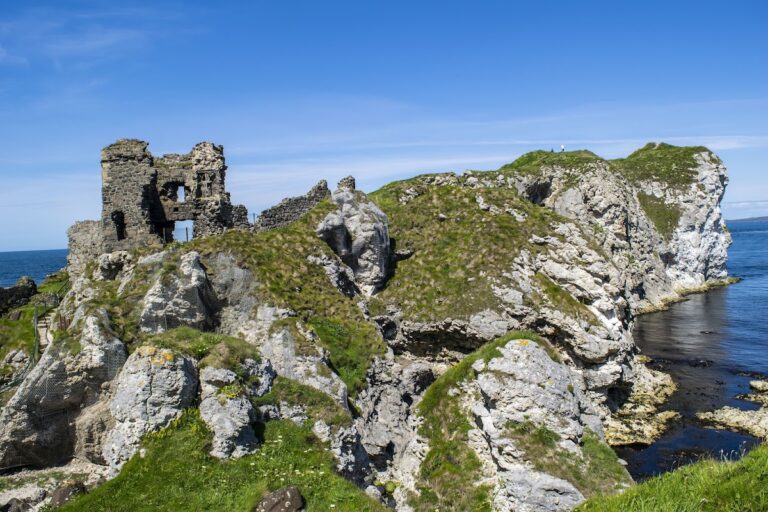Carra Castle: A Medieval Stronghold in Northern Ireland
Visitor Information
Google Rating: 4.1
Popularity: Very Low
Google Maps: View on Google Maps
Official Website: www.communities-ni.gov.uk
Country: United Kingdom
Civilization: Unclassified
Remains: Military
History
Carra Castle is situated just north of Cushendun within the jurisdiction of Ballymena, United Kingdom. Constructed around the early 14th century, this stronghold was built by a medieval civilization active in Northern Ireland. Its foundations rest on a site once utilized during the Mesolithic period for flint tool production, indicating a location of long-standing human activity.
During the 16th century, Carra Castle became a significant fortress amid the turbulent power struggles of Irish noble families. Notably, it was held by Shane O’Neill, a prominent Irish king. In 1565, Sorley Boy McDonnell, a well-known chieftain, was imprisoned within its walls. Two years later, after his defeat by O’Neill, the McDonnells extended hospitality to the king at the castle for a hunting and feasting event lasting two days. However, the peaceful gathering ended abruptly when a dispute led to O’Neill’s death at the hands of the McDonnells. His severed head was subsequently sent to English authorities based in Dublin Castle.
In 1585, Carra Castle was the scene of a military confrontation when Donnell Gorm MacDonnell was besieged by English forces. The siege was lifted when Sorley Boy McDonnell arrived by sea nearby and drove away the attackers. By the early 18th century, around 1730, the castle had passed into the possession of the Lynch family, marking a phase of continued domestic occupation. Furthermore, during medieval times, the area close to the castle served as a burial ground for children, underscoring its local communal significance over the centuries.
Remains
Today, the site of Carra Castle preserves the ruins of a square tower house dating to the 16th century. This type of building combined features of a hall house—an early medieval residential form emphasizing a large communal room—with the overall external proportions typical of a defensive tower house. Constructed mainly from rough, uncut stone sourced locally, the castle’s appearance reflects functional medieval construction methods.
The surviving structure stands in a field near the coastal edge of the harbour at Cushendun, a location which once offered strategic oversight of the surrounding waters. Over time, the castle has become overgrown with ivy and fallen into ruin, with its walls partially standing amid natural vegetation. Archaeological evidence beneath the castle confirms that the site had been important long before the castle’s erection, as indicated by the discovery of Mesolithic flint-working remains.
No inscriptions, altars, or decorative elements have been recorded at the site. The ruins remain distinct as a historical monument in situ, offering visible testimony to the layered human history of this coastal locality, from prehistoric toolmakers to medieval kings and clans.







